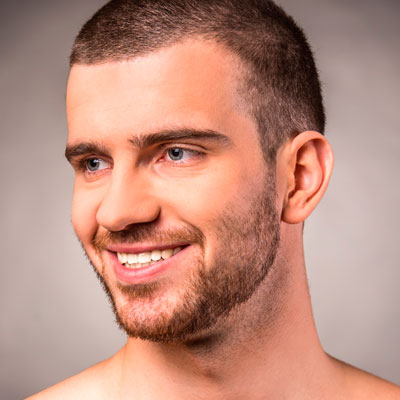Enjoy Free Shipping on All Orders Over $100!
Trimming and Detailing Your Beard and Mustache
Beard and mustache styles don’t all play by the same rules, but unless you’re growing a "yeard" (year-long beard), you’ll need some cleanup from time to time. You may already have a grooming arsenal supplied with electric shavers, razors, clippers, trimmers and groomers, or you may be looking for the One Perfect Tool. Either way, we’ve got some tips that will keep your beard and mustache in harmony with your face.

Depending on your beard or mustache style, your facial hair has only 4 basic areas that need maintenance.
The Lip Line
Goatees, circle beards and Van Dykes are among the beard styles that accentuate your mouth and help define your chin. Mustaches can create a look that balances your facial features and brings attention to your lower face. These refined styles need maintenance around the lip and chin lines.The technique:
Begin by running your shaver or trimmer along the areas of your face and neck that should remain hairless.
Comb your beard, goatee and/or mustache.
Focusing on the area beneath your lower lip, use a detail trimmer blade to carefully remove hairs that lie outside your beard’s intended shape.
Refine your mustache shape by first using a trimmer blade along its bottom edge. Start from the center and work outward. The goal here is to shape the curves of your mustache.
Using a guide comb attachment on your trimmer, cut the ends off your mustache hairs to achieve the length you want. A well-trimmed mustache is typically cut to a fraction of an inch above the lip line.
Using a detail blade to remove hairs between your nose and the top of your mustache can refine your look further.
The Neckline
You beard’s neckline seats your look. It’s critical that you get it right. Styles vary, but you should understand the basics.
The technique:
Find your neckline. It generally begins 1 to 2 inches above your Adam’s apple. Lower your chin slightly and feel where its underside joins the top of your neck. Now extend the line just beneath your jaw to below your ear.
Picture a line drawn along the back of your sideburns (in front of your ears) down to just below your jawline where it meets the neckline.
Use your trimmer or electric shaver on a close setting to remove all the hair below these lines.
The Length and Thickness
Now that you’ve created the proper outlines, you’ll need to sharpen the shape of your beard and remove split ends or uneven hair growth.
The technique:
Comb your beard and determine how deeply you want to trim.
Select an appropriately-sized guide comb and attach it to your trimmer. Be conservative and begin with a longer guide. Note that you may want a longer length toward your chin and a shorter length at the sides.
Starting at your chin and working toward your ears, trim in the same direction as the hair’s growth. This is generally from the top down, but may change along your neckline. Stop and assess frequently.
Trim your beard in layers and don’t expect to get everything in a single pass. Keep your eyes on the mirror and don’t get distracted.

Notes on Stubble
Stubble is definitely worth a discussion. Whether you want a 5 o’clock shadow or a rough 3-day growth, you’ll need to groom your stubble to keep down the grizzle. Stubble length is typically 3-5mm. Choosing a trimmer that accommodates this length is a must. Look for length-control features or close-cut guide combs.
The technique:
Keep the stubble to the lower third of your face and let it continue to your neckline.
Set your trimmer blades to the desired length or attach the appropriate guide comb. If you’re not sure, begin with a longer length.
Move the trimmer through your beard along the contours of your face.
You’ll need to make several passes because hair density can vary. With a consistent stubble you’ll look groomed and not scruffy.